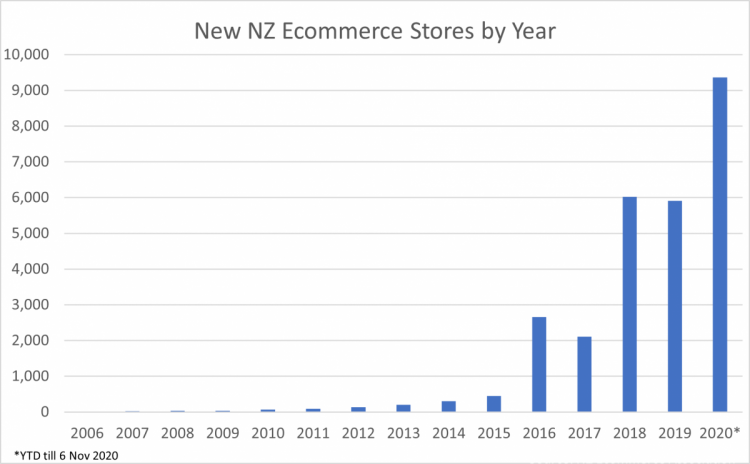You are now leaving Centuria New Zealand
and entering Centuria Australia.
There are a number of larger economic and social themes which are creating significant change in industrial markets generally, with a flow-on effect to the type of industrial property most likely to be in demand.
eCommerce has changed traditional retailing forever – warehouses are the new source of goods, and the effect has been felt in traditional bricks and mortar retailing space – which has declined in line with increasing demand for industrial space in which to store, pack and ship packages. The most recent e-commerce industry report published by NZ Post1 notes the increased online spend over 2020, a trend which was accelerated by Covid-19. According to this report $5.8 billion, or 11% of total retail spend was done online. Despite this strong growth in online spend, comparisons with more established global e-commerce markets such as the UK and US (>20%) indicate that there is still plenty of room for growth.

Graph source: Bayleys | Property Council New Zealand2
The need for faster, more efficient delivery of packages has led to increased tenant demand for metropolitan/centralised industrial sites. This has continued to position industrial as a highly desirable investment asset class.
More than 90% of the freight is transported by road in New Zealand, and 42% of the freight is transported within the “golden triangle”. The golden triangle region consists Auckland, Hamilton, and Tauranga – which account for 50% of New Zealand’s economic output and is home to half of the country’s population. There is an expected population growth of 31% by year 2043, resulting in an unprecedented demand for freight handling facilities in the golden triangle3.
At the same time, demand for large industrial distribution centres, as the first sorting point, particularly for imported goods, is also on the rise.
The final driver of changes to the industrial real estate market is the renaissance of manufacturing. Clean manufacturing is on the rise, as a result of the so-called ‘fourth industrial revolution’, or the use of transformative technologies to connect the physical world with the digital world.
Trends such as the use of advanced automation and robotics, machine-to-machine and human-to-machine communication as well as artificial intelligence and machine learning are helping manufacturers control two of their longstanding challenges – high labour costs and distance to markets.
Real-time access to production information, logistics and monitoring means better connectivity between customers and supply chains, as well as greater flexibility to produce differentiated products and services on a small scale.
According to a report by global management consultancy Bain & Company, automation powered by the rise of artificial intelligence, will be a key driver of change4.
1 “The Full Download: 2021 New Zealand eCommerce Review”; NZ Post, 2021
2 “July Market Outlook 2021”; Bayleys | Property Council New Zealand, July 2021
3 “New Zealand Freight and Logistics Market – Growth, Trends, COVID-19 Impact, and Forecasts (2022-2027), Mordor Intelligence
4 “The Collision of Demographics, Automation and Inequality”; Bain & Company, February 2018